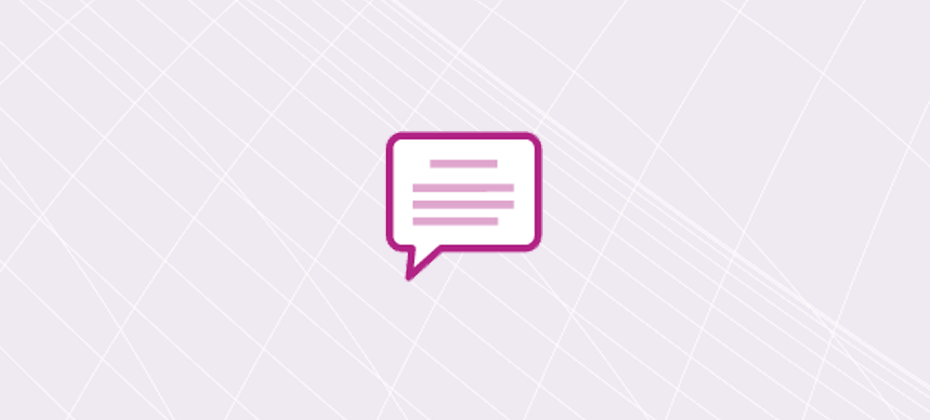All posts by Rollin Girulat

It should come as no surprise that the process of trying to collect on past-due accounts has been evolving. We’ve seen the migration from traditional mail and outbound calls, to offering an electronic payment portal, to digital collections and virtual negotiators. Being able to get consumers who have past-due debt on the phone to discuss payments is almost impossible. In fact, a recent informal survey divulged a success rate of a 15% contact rate to be considered the best by several first-party collectors; most reported contact rates in the 8%-range. One can only imagine what it must be like for collection agencies and debt buyers. Perhaps, inviting the consumer to establish a non-threatening dialog with an online system can be a better approach? Now that collectors have had time to test virtual collections, we’ve collected some data points. Conversion rates, revisits, and time of day An analysis of several clients found that on average 52% of consumers that visit a digital site will proceed to a payment schedule if the right offer is made. 21% of the visits were outside the core hours of 8 a.m. to 8 p.m., an indication that consumers were taking advantage of the flexibility of reaching out at any time of the day or night to explore their payment and settlement options. The traditional business hours don’t always work. Here is where it really gets interesting, and invites a clear comparison to the traditional phone calls that collectors make trying to get the consumer to commit to a payment plan on the line. Of the consumers that committed to a payment plan, only 56% did it in a single visit. The remaining 44% that committed to payments did so mostly later that day, or on a subsequent day. This strongly suggests they either took time to check their financial status, or perhaps asked a friend or family to help with the payment. In other words, rather than refusing to agree to an instantaneous agreement pressured by a collector, the consumer took time to reflect and decide what was the best course of action to settle the amount due. On a similar note, the attrition rate of “Promises to Pay” were 24% lower using online digital solutions versus the traditional collector phone call. This would be consistent with more time to agree to a payment plan that could be met, rather than weakly agreeing to a collector phone call just to get the collector off the phone. Another possible reason for a lower attrition rate may be that a well-defined digital collection solution can send out reminders to consumers via email or text in advance of the next scheduled payment, so that the consumer can be reminded to have the funds available when the next payment hits their account. For accounts where settlement offers are part of the mix, a higher percentage of balances is being resolved versus the collection floor. In fact, the average payment improvement is 12% over what collectors tend to get on the collections floor. The reason for this significant change is unclear, but the suspicion is that a digital collection solution will negotiate stronger than a collector, who is often moving to the bottom of an acceptable range too soon. What\'s next? Further assessing the consumer’s needs and capabilities during the negotiation session will undoubtedly be a theme going forward. Logical next steps will include a “behind-the-scenes” look at the consumer’s entire credit picture to help the creditor craft an optimal settlement amount that both the consumer can meet, and at the same time optimizes recovery. Potential impact to credit scores will also come into the picture. Depending on where the consumer and his past-due debt is in the credit lifecycle, being able to reasonably forecast the negative impact of a missed payment can act as an additional argument for making a past-due or delinquent payment now. As more financial institutions test this new virtual approach, we anticipate customer satisfaction and resolutions will continue to climb.

It should come as no surprise that reaching consumers on past-due accounts by traditional dialing methods is increasingly ineffective. The new alternative, of course, is to leverage digital channels to reach and collect on debts. The Past: Dialing for dollars. Let’s take a walk down memory lane, shall we? The collection approach used for many years was to initially send the consumer a collection letter recapping the obligation and requesting payment, usually when an account was 30 days late. If the consumer failed to respond, a series of dialing attempts were then made, trying to reach the consumer and resolve the debt. Unfortunately, this approach has become less effective through the years due to several reasons: The use of traditional landlines continues to drop as consumers shift to cell and Voice Over Internet Protocol (VOIP) services. The cost of reaching consumers by cell is more costly since predictive dialers can’t be used without prior consent, and the obtaining and maintaining consent presents its own set of tricky challenges. Consumers simply aren’t answering their phones. If they think a bill collector is calling, they don’t pick up. It’s that simple. In fact, here is a breakdown by age group that Gallup published in 2015, highlighting the weakness of traditional phone-dialing. The Present: Hello payment portal. With the ability to get the consumer on the phone to negotiate a payment on the wane, the logical next step is to go digital and use the Internet or text messaging to reach the consumer. With 71 percent of consumers now using smartphones and virtually everyone having an Internet connection, this can be a cost-effective approach. Some companies have already implemented an electronic payment portal whereby a consumer can make a payment using his or her PC or smartphone. Usually this is prompted by a collection letter, or if permitted by consumer consent, a text message to their smartphone. The Future: Virtual negotiation. But what if the consumer wants to negotiate different terms or payment plans? What if they want to try and settle for less than the full amount? In the past – and for most companies operating today – this translates into a series of emails or letters being exchanged, or the consumer must actually speak to a debt collector on the phone. And let’s be honest, the consumer generally does not want to speak to a collector on the phone. Fortunately, there is a new technology involving a virtual negotiator approach coming into the market now. It works like this: The credit grantor or agency contacts the consumer by letter, email, or text reminding them of their debt and offering them a link to visit a website to negotiate their debt without a human being involved. The consumer logs onto the site, negotiates with the site and hopefully comes to terms with what is an acceptable payment plan and amount. In advance, the site would have been fed the terms by which the virtual negotiator would have been allowed to use. Finally, the consumer provides his payment information, receives back a recap of what he has agreed to and the process is complete. This is the future of collections, especially when you consider the younger generations rarely wanting to talk on the phone. They want to handle the majority of their matters digitally, on their own terms and at their own preferred times. The collections process can obviously be uncomfortable, but the thought is the virtual negotiator approach will make it less burdensome and more consumer-friendly. Learn more about virtual negotiation.

All skip tracing data is the same, right? Not exactly. While there are many sources of consumer contact data available to debt collectors, the quality, freshness, depth and breadth can vary significantly. Just as importantly, what you ultimately do or don't do with the data depends on several factors such as: Whether or not the debt is worth your while to pursue How deep and fresh the data is What if no skip data is available, and, What happens if there is no new information available when you go to your skip-tracing vendor requesting new leads? So what's the best way for your company to locate debtors? What data sources are right for you? Check out my recent article in Collections and Credit Risk for some helpful advice, and be sure to check out our other debt collection industry blog posts for best practices, tips and tricks on ways to recover more debt, faster. What data sources do you find most beneficial to your business and why? Let us know by commenting below.

It comes as no surprise to anyone that cell phone usage continues to rise, while at the same time the usage of wire lines, or what used to be affectionately known as POTS (Plain Old Telephone Service), continues to decline. Some recent statistics, supplied by the CDC show that: 34% of all households are now wireless only 25 states have rates of primary wireless exceeding 50% Landline only households is now down to only 10.2% When you couple that with churn rates for cell phones that can exceed 40% a year, it becomes paramount to find a good source for cell numbers if you are trying to contact an existing customer or collect on an overdue bill. But where can debt collectors go to find reliable cell phone numbers? The cell phone providers won’t sell you a database, there is no such thing as 411 for cell phones, nor is it likely there will be one in the near future with the aforementioned 40%+ churn rates. Each cell phone service provider will continue to protect their customer base. There are a few large compilers of cell phone numbers; they mostly harvest these numbers from surveys and sources that capture the numbers as a part of an online service—think ringtones here! These numbers can be good, at least initially, if they came with an address which enables you to search for them. The challenge is that these numbers can grow stale relatively quickly. Companies that maintain recurring transactions with consumers have a better shot at having current cell numbers. Utilities and credit bureaus offer an opportunity to capture these self-reported numbers. At our company, over 40% of self-reported phones are cell phones. However, in most cases, you must have a defined purpose as governed by Gramm Leach Bliley (GLB) in order to access them. Of course, the defined purpose also goes hand in hand with the Telephone Consumer Protection Act (TCPA), which restricts use of automatic dialers and prohibits unsolicited calls via a cell phone. Conclusion? If you are trying to find someone’s cell number for debt collection purposes, I recommend using a resource more likely to receive updates on the owner of a cell over that of compilers who are working with one time event data. In today’s world, obtaining an accurate good cell number is a challenge and will continue to be. What cell phone number resources have been most effective for you?
